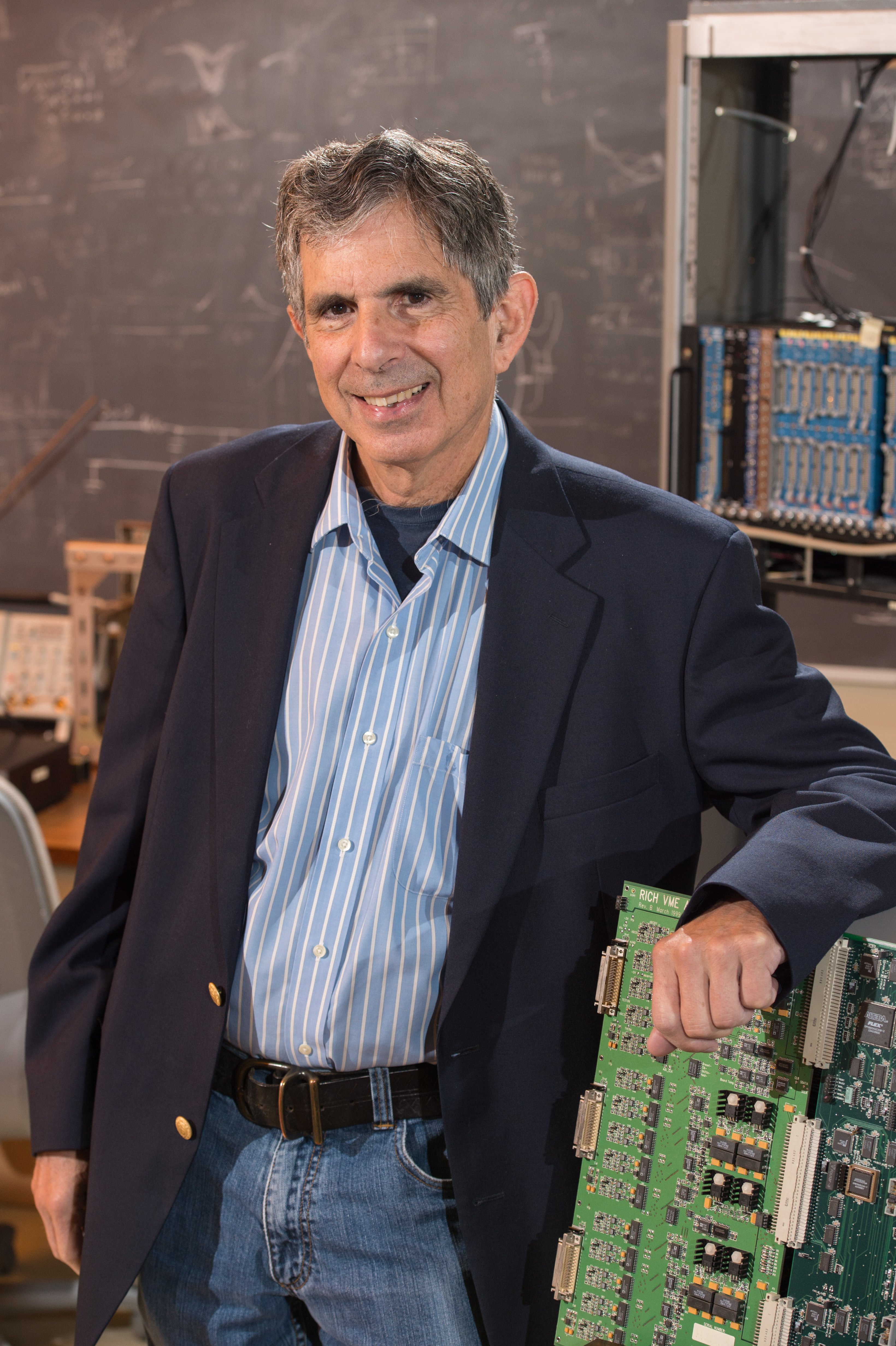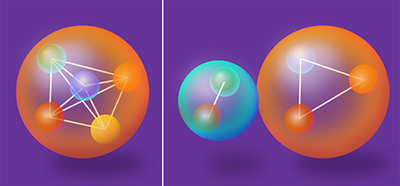LHCb's Pentaquark Discovery Named 'Top-10 Breakthrough' of 2015
Syracuse physicists led data analysis, putting to rest 51-year-old mystery

A discovery by scientists in Syracuse University’s College of Arts and Sciences has been named one of the “Top-10 Breakthroughs” of the year by Physics World magazine.
Physics professors Tomasz Skwarnicki and Sheldon Stone, along with Ph.D. student Nathan Jurik G’16 and former research associate Liming Zhang (now a professor at Tsinghua University in Beijing), made international headlines in July, when they discovered two rare pentaquark states.
The accolade is the latest in a series for the team, putting to rest a 51-year-old mystery, in which American physicists Murray Gell-Mann and George Zweig independently proposed that all baryonic matter is composed of three quarks, or four quarks and an antiquark known as a pentaquark. While many three-quark baryons have been found, the pentaquark sighting is a first.
Physics World is published monthly by the London-based Institute of Physics, one of the world’s largest, most prestigious physical societies.
“This discovery explains not only how protons and neutrons are bound together, but also how matter is constituted,” says Alan Middleton, professor and chair of physics. “Pentaquarks force us to rethink how atomic nuclei behave under the most extreme conditions, from the super-dense Early Universe to neutron stars. It’s a milestone for particle physics, in general.”
The discovery occurred at the European Organization for Nuclear Research, also known as CERN. Based in Geneva, Switzerland, CERN is home to the Large Hadron Collider (LHC), the biggest, most powerful particle accelerator in the world. Each year, thousands of scientists and engineers flock to CERN, in hopes of better understanding the makeup of the Universe.
Among them are some 800 scientists—including a team of 20 Syracuse researchers, headed up by Stone—who are involved with the LHCb experiment. (The “b” stands for “beauty,” which is a type of quark found in protons and neutrons. While absent in today’s universe, b quarks were prevalent after the Big Bang, nearly 14 billion years ago, and have been generated extensively by LHCb.) The LHCb team uses the accelerator to fling particles together to see what happens.
“Energy is sometimes converted into heavy particles that are not normally found in nature,” says Skwarnicki, a Fellow of the American Physical Society (APS). “By examining the debris from these high-impact collisions, we’re able to learn more about the building blocks of matter and the forces controlling them.”

Also an APS Fellow, Stone is a Distinguished Professor who says the pentaquark discovery puts a fine point on quantum chromodynamics, which helps explain how quarks behave inside protons and other particles.
“We’re recreating the first millionth of a second of the Universe,” Stone says. “After the Large Hadron Collider creates proton-proton collisions, the LHCb detector uses a powerful magnet to cause the paths of charged particles to curve, with positive and negative particles moving in opposite directions. It’s through this curvature that we calculate the momentum of the particles. Their identities are then established with other devices, which deduce their mass by making velocity measurements.”
Jurik and Zhang are indicative of the University's commitment to research training. In fact, both of them instigated the pentaquark project and wrote the code for the analysis. Zhang then presented the group’s findings at CERN. “I am proud to have come up with a model that has been proven, mathematically, and is essential to the project,” he adds.
The pentaquark discovery probably would not have happened without an LHCb paper that Skwarnicki published in April 2014, confirming the existence of a tetraquark known as Z(4430), containing two quarks and two antiquarks. The paper was the LHCb’s most quoted one of the year, and established a prototype for an analysis method later applied to pentaquarks.
Around the same time, Stone and Zhang published an LHCb paper, in which they suggested that another particle, called f0(980), was not a tetraquark, as originally thought, but was a meson, with two quarks.

“All convincing tetraquark and pentaquark candidates have a heavily charmed quark-antiquark pair inside them,” Skwarnicki says, adding that charm quarks are among the most massive of all quarks.
Syracuse’s high-energy research group has a knack for grabbing headlines. Within days of the pentaquark discovery, Professor Marina Artuso addressed the European Physical Society Conference on High-Energy Physics in Vienna, where she revealed that baryonic decays with beauty quarks are consistent with being “left-handed.”
Last fall, Professor Steven Blusk identified two never-before-seen baryons with three quarks and large masses, while sifting through several-year-old CERN data.
“A lot of different quarks are created by the LHC, before they fall apart or decay into other forms,” says Stone, who spends an average of three months a year at CERN, working on LHCb. “Our goal is to catch these b quarks, which are usually part of some baryon [with three quarks] or meson [three quarks and an antiquark], and to analyze their decays.”
The “Top 10” is chosen by a panel of Physics World editors and reporters. Qualified research must be of fundamental importance, represent a significant advancement in knowledge, demonstrate a strong link between theory and practice, and be of interest to all physicists.
More information about the University’s high-energy research group may be found in the forthcoming article, “The Particle Detectives,” in the Fall/Winter 2015 issue of Syracuse University Magazine.
